Response Detection
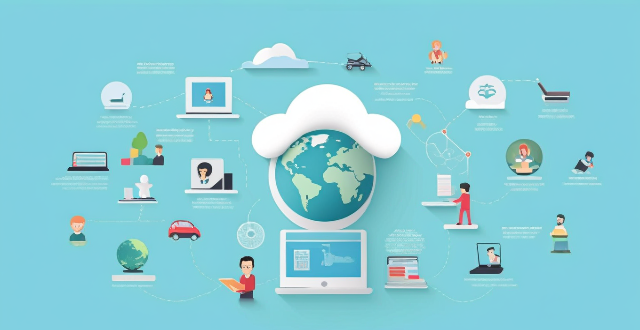
Can mobile apps help with earthquake detection and response ?
Mobile apps can significantly contribute to earthquake detection and response by providing immediate alerts and enhancing the detection network. These apps use smartphone accelerometers to sense seismic waves, aggregate data from multiple devices, and rapidly identify quake epicenters. Key features include real-time alerts, customizable thresholds, and widespread infrastructure. Benefits include critical warning time and low implementation cost, but limitations such as dependency on user devices and infrastructure availability exist. Top apps like Google's Early Warning System and MyShake aid in earthquake detection, and best practices include ensuring proper configuration, staying updated, and active participation. Mobile apps offer a cost-effective solution for disaster response and management globally.

What lessons can we learn from previous pandemics to improve our current response efforts ?
The text discusses lessons learned from previous pandemics, emphasizing the importance of early detection and response, global cooperation and information sharing, robust public health infrastructure, reliance on science and evidence-based policymaking, and addressing socioeconomic factors that influence pandemic outcomes. Examples from past pandemics such as HIV/AIDS, H1N1, and COVID-19 illustrate these points, highlighting the need for a comprehensive approach to future pandemic responses.

What are the best practices for emergency response ?
In the face of emergencies, a well-prepared and effective response can significantly mitigate damages and save lives. This article outlines the best practices for emergency response to ensure that organizations and communities can react swiftly and appropriately in times of crisis. These include preparation and planning, communication protocols, training and drills, and resource allocation. By following these practices, organizations can enhance their resilience and ability to manage crises effectively.

What role does AI play in improving cybersecurity ?
AI significantly enhances cybersecurity by offering advanced threat detection, risk assessment, and automated response mechanisms. It improves the efficiency and accuracy of defenses but also presents new challenges that require innovative solutions. AI's role in cybersecurity includes advanced threat detection through anomaly detection and predictive analytics, automated risk analysis for optimized defense strategies, enhanced malware detection using deep learning models and behavioral analysis, improved identity verification with biometric authentication and adaptive access controls, network automation and repair for self-healing networks and vulnerability management, and phishing and spam prevention through email security solutions and real-time alert systems. However, AI's integration into cybersecurity also introduces potential misuse by attackers, data privacy concerns, and algorithmic transparency and bias issues. Addressing these challenges is crucial for fully leveraging AI's potential in enhancing cybersecurity while upholding privacy, ethical standards, and resilience against emerging threats.

How important is communication during an emergency response ?
Communication is a critical component of any emergency response. It helps to coordinate efforts, gather information, make decisions, and ensure the safety of all parties involved. Effective communication can streamline the response process and avoid confusion or misunderstandings. The importance of communication during an emergency response includes coordination, information gathering, decision making, and safety. Best practices for communication during an emergency response include using clear and concise language, establishing a chain of command, using multiple channels of communication, and maintaining situational awareness. By following these best practices, you can help to streamline the response process and minimize damage. Remember that effective communication is essential for ensuring the safety and well-being of everyone involved in emergencies.
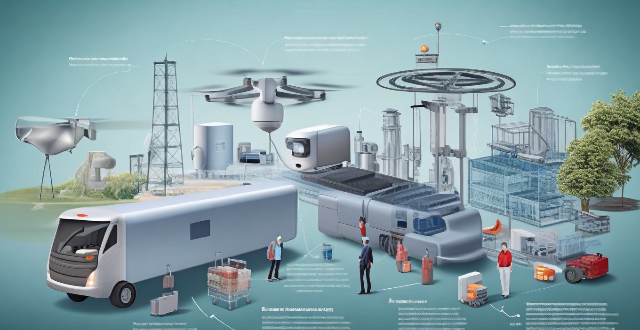
What role does technology play in emergency response ?
The article discusses the various ways technology is used in emergency response, including communication via instant messaging platforms and two-way radios, GPS tracking for vehicles and personnel, data analysis for crime and fire trends, and the use of drones and robots. Technology has made emergency response more efficient and effective by improving communication, location tracking, data analysis, and automation.

How can I improve my company's emergency response capabilities ?
Improving your company's emergency response capabilities is crucial for ensuring the safety of employees, customers, and assets. Here are some steps you can take to enhance your organization's ability to handle emergencies effectively: 1. Conduct a Risk Assessment 2. Develop an Emergency Response Plan 3. Train Employees and Conduct Drills 4. Invest in Technology and Equipment 5. Maintain a Culture of Safety

How do biosafety policies evolve in response to emerging infectious diseases and pandemics ?
Biosafety policies are evolving in response to emerging infectious diseases and pandemics. The evolution is driven by scientific advancements, global health initiatives, and lessons from past outbreaks. Key factors driving this evolution include: - Scientific advancements such as research and development and genomic sequencing. - Global health initiatives like international collaboration and surveillance systems. - Lessons learned from past outbreaks, leading to review and revision of policies and the adoption of best practices. Examples of evolved biosafety policies include: - Laboratory biosafety with clear classification systems (BSL) and standard operating procedures (SOPs). - Public health measures such as infection prevention and control (IPC) and vaccination programs. - Travel restrictions and quarantine measures like entry screening and quarantine regulations. - International regulations and agreements, including the Biological Weapons Convention (BWC) and the Global Health Security Agenda (GHSA). The continuous evolution of biosafety policies is crucial for managing risks associated with biological agents and protecting public health.

What are the best practices for mobile network optimization ?
The article provides best practices for mobile network optimization, which are crucial for ensuring seamless connectivity and efficient data transfer. The practices include proper site selection, cell configuration, spectrum allocation, power control, antenna selection, frequency reuse, load balancing, congestion control, QoS, regular maintenance, fault detection and resolution, performance monitoring, authentication and authorization, encryption, and intrusion detection and prevention. By following these practices, mobile network operators can optimize their networks for better performance, reliability, and security, ultimately providing a better user experience for their customers.

What role do safety drills play in emergency preparedness ?
Safety drills play a pivotal role in emergency preparedness by raising awareness, practicing response skills, building teamwork, assessing readiness, and ensuring compliance with regulations. They familiarize individuals with procedures, identify hazards, enhance key skills like evacuation and first aid, foster coordinated responses, develop leadership, reveal gaps for improvement, and meet legal standards, ultimately creating a culture of safety.

What are the most effective strategies for aligning climate action with the SDGs ?
This response discusses the importance of aligning climate action with the United Nations' Sustainable Development Goals (SDGs) and provides strategies for achieving this alignment. It emphasizes the need for integrated policy planning, financing and investment, innovation and technology, capacity building and education, data and monitoring, and advocacy and partnerships. The response concludes by highlighting the significance of a comprehensive approach that involves collaboration among various stakeholders to achieve a sustainable future where climate resilience and sustainable development are mutually reinforcing goals.

How does AI contribute to the detection and prevention of doping in sports ?
AI is transforming doping detection and prevention in sports by enabling data collection, predictive analytics, testing optimization, anti-doping education, and integration with other systems.

What should be included in an emergency response plan ?
An emergency response plan is a critical tool for organizations to prepare for and respond to unexpected events. It outlines the procedures and actions that should be taken during an emergency situation. Key components of an effective emergency response plan include identification of potential emergencies, roles and responsibilities, communication protocols, evacuation procedures, medical assistance, and recovery and restoration steps. By anticipating potential risks and preparing accordingly, organizations can minimize the impact of emergencies and ensure the safety and well-being of their employees and stakeholders.

How do military strategies need to adapt to address the consequences of climate change ?
The text discusses the challenges and adaptations necessary for military strategies to account for the consequences of climate change. It emphasizes the need for impact assessments, operational planning, training and preparation, technology and innovation, cooperation and diplomacy, and readiness and response. Key points include understanding how climate change affects specific regions, developing resilient supply chains and adaptive infrastructure, incorporating climate change into training scenarios, utilizing advanced predictive tools, working with allies and international organizations, and establishing rapid response capabilities. By integrating these elements into defense policy, militaries can remain effective and resilient in the face of a changing climate.

What is the appropriate response to someone having a seizure ?
Appropriate Response to Someone Having a Seizure: 1. **Immediate Actions**: - Ensure Safety by clearing the area and protecting the person. - Do Not Restrain the person or put anything in their mouth. - Time the seizure and note specific symptoms. - Call for Help if it's the person's first seizure, they have multiple seizures without regaining consciousness, or the seizure lasts longer than 5 minutes. 2. **Post-Seizure Care**: - Stay with the person, offering comfort and emotional support. - Check for Injuries and provide first aid if necessary. - Seek Medical Attention and ensure follow-up on treatment. - Educate Yourself and Others about seizures to improve response skills.
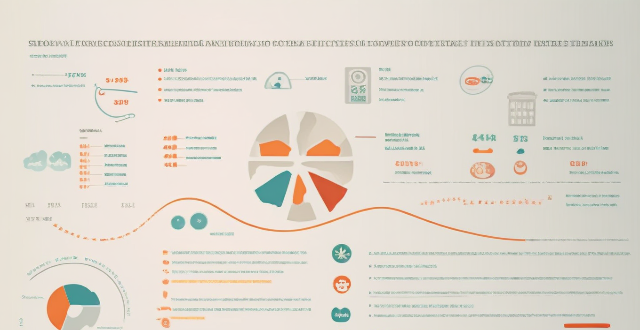
What strategies have been successful in controlling the spread of COVID-19 in other countries ?
Successful strategies in controlling the spread of COVID-19 include early detection and response through testing and contact tracing, stringent lockdown measures, public health campaigns and education, and investment in healthcare infrastructure. Examples of countries that have implemented these strategies effectively include South Korea, New Zealand, Italy, India, Singapore, Germany, and Canada. By learning from these examples, other countries can improve their own responses to the pandemic and work towards containing its spread.

What role does public health play in the implementation of biosafety policies ?
Public health is crucial for implementing biosafety policies, which aim to contain and manage biological agents that may pose a risk to human health, animal health, or the environment. Public health professionals play key roles in surveillance and disease detection, risk assessment and management, laboratory biosafety, vaccination programs, public education and awareness, policy development and implementation, emergency response, and international collaboration. By monitoring disease trends, assessing risks, maintaining laboratory safety, promoting vaccination, educating the public, developing policies, responding to emergencies, and collaborating internationally, public health professionals help protect individuals and communities from biological hazards.

What role does technology play in modern disaster response and recovery ?
Technology plays a vital role in modern disaster response and recovery by enhancing early warning systems, improving communication and coordination, and enabling efficient data collection and analysis.

How do communication satellites contribute to disaster response and relief efforts ?
Communication satellites are vital for disaster response and relief efforts, providing real-time information, surveillance, coordination, emergency communications, and aiding search and rescue operations. They enable quick decision-making and efficient resource allocation during emergencies.

How can satellite communication be used for emergency response and disaster relief ?
Satellite communication is critical in emergency response and disaster relief, offering global coverage, high availability, scalability, and multipurpose use. It enables immediate alerts, coordination, resource deployment, and medical assistance during emergencies. In disaster relief, it aids damage assessment, information dissemination, infrastructure recovery, and aid distribution. Key technical aspects include satellite phones, VSAT terminals, and data collection through sensors. Proper logistics such as training, maintenance, and partnerships with service providers are crucial for effective utilization. Satellite communication significantly enhances the capability to respond to natural disasters and emergencies, reducing their impact on lives and properties.

Can vaccines be used to treat cancer or other non-infectious diseases ?
Vaccines are traditionally used to prevent infectious diseases by stimulating the immune system to recognize and attack specific pathogens. The possibility of using vaccines for the treatment of cancer or other non-infectious diseases is being explored, with a focus on modulating the immune response rather than stimulating it. Cancer vaccines, including preventive and therapeutic types, aim to stimulate the immune system to recognize and destroy tumor cells. For autoimmune diseases, researchers are exploring ways to use vaccines to dampen overactive immune responses or retrain the immune system. Vaccines are also being investigated for their potential in treating other chronic diseases such as Alzheimer's and heart disease. While promising, the application of vaccines in treating non-infectious diseases faces significant challenges, including identifying unique targets and balancing immune responses. Advancements in immunology and vaccine technology offer hope for new treatments that could benefit millions worldwide.

What is the role of cybersecurity in protecting communication systems ?
The text discusses the importance of cybersecurity in protecting communication systems by ensuring data confidentiality, integrity, and availability. It outlines measures such as encryption techniques, access control, digital signatures, hash functions, network uptime, redundancy, and disaster recovery plans. Additionally, it suggests best practices like regular updates, firewalls, user awareness training, strong authentication mechanisms, and incident response plans to enhance cybersecurity in communication systems.
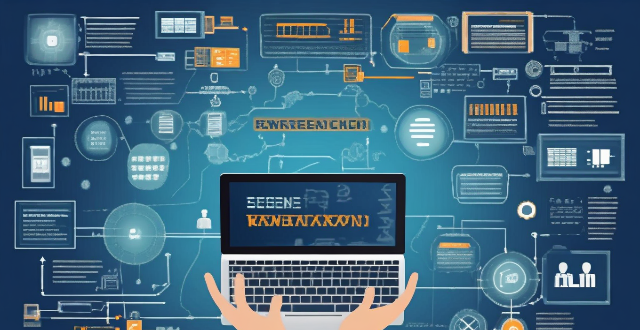
How can I ensure my business is protected from cyber threats ?
To ensure your business is protected from cyber threats, consider implementing measures such as educating employees on cybersecurity, using strong passwords and two-factor authentication, keeping software up-to-date, using antivirus and anti-malware software, securing networks with firewalls and encryption, backing up data regularly, limiting access to sensitive information, monitoring network activity, and developing incident response plans.

What are the essential elements of an effective emergency response plan for construction sites ?
An effective emergency response plan for construction sites is essential to ensure safety, minimize damage, and comply with legal requirements. Key components include hazard identification, prevention measures, emergency procedures, recovery strategies, coordination, and legal compliance. Implementation involves training, drills, and regular updates based on feedback and incident debriefing.

What are the potential uses of IoT in transportation ?
The Internet of Things (IoT) has the potential to revolutionize the transportation industry by making it more efficient, safe, and sustainable. Some of the potential uses of IoT in transportation include real-time traffic monitoring, smart parking systems, intelligent traffic signals, vehicle tracking, maintenance alerts, fuel efficiency monitoring, crash detection and response, anti-theft systems, driver behavior monitoring, electric vehicle charging infrastructure, route optimization, and smart public transit. These technologies can improve traffic management, fleet management, safety and security, and sustainability in the transportation industry.
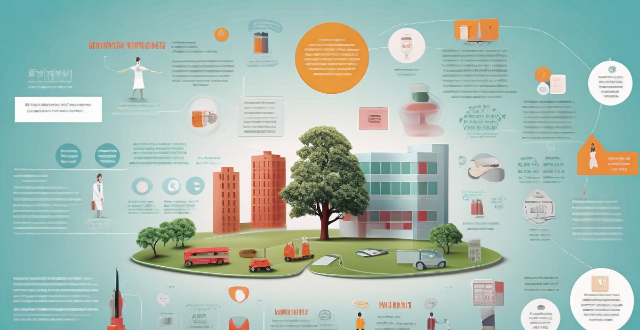
What is the importance of research and development in improving global health security ?
Research and development (R&D) play a vital role in advancing global health security by improving disease detection, prevention, control measures, strengthening health systems, driving innovation, addressing antimicrobial resistance, preparing for future pandemics, and promoting equity and accessibility. R&D leads to the development of advanced surveillance systems, diagnostic tools, vaccines, medications, public health interventions, health infrastructure, technology, capacity building, cross-disciplinary approaches, open science, economic growth, sustainable development, novel antimicrobials, stewardship programs, risk assessment, pan-sectoral approaches, universal health coverage, and global health initiatives.